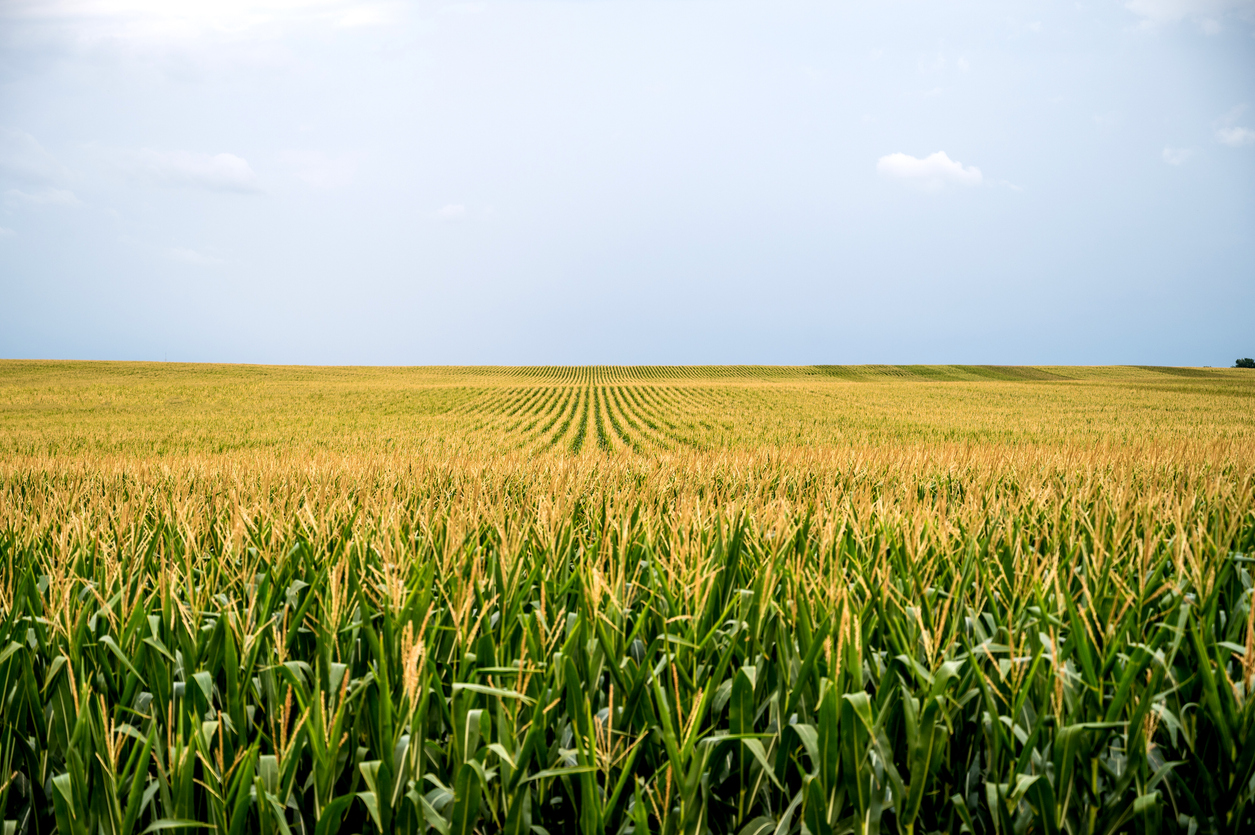Late Season Corn Fertilizer
Heavy rains have been falling in many areas in the month of July. This has many farmers wondering how much Nitrogen (N) is still available. Soluble N in the form of nitrate can be leached, some can runoff the surface, and other N can be lost by denitrification into the atmosphere. If corn is turning yellow, it can be nitrogen or sulfur (S) deficient or both. Many farmers are asking, is it too late to apply corn fertilizer?
Late season corn N applications have proven to be successful, but often requires specialized high clearance fertilizer equipment. Often, fungicides and micro-nutrient blends are also put on late, so adding some N fertilizer is an option. University of Missouri and Ohio State University research shows that urea and dribbling on 28% UAN can be applied late season. With the recent rains, most fields should have adequate moisture for the N to used effectively. Some leaf burn may occur with broadcast urea, but yield damage is relatively slight.
How late can N be applied? Most research shows that N applied up to tasseling is quite effective, after tasseling; results are more variable. Corn takes up N much slower after tasseling as the corn goes from a vegetative stage to reproductive. Nitrogen is translocated from the stored N in the vegetation to make grain. Tissue tests are recommended to determine the rate of N needed. If for some reason, no N was applied, or a significant portion was lost; up to full rates of N can still be applied with good results.
Farmers are now using Y drops as a new way to apply late season N. The Y drop system applies liquid N to the base of the corn plant. Corn gets about 60% of its soil N within about 7 inches of the corn stalk. With Y drops, N can be applied right at the base of the plant so that about 80% of the corn roots are in the vicinity of applied N.
The Y drops increase N nutrient use efficiency. Farmers can apply the N in split applications to increase efficiency and also apply other nutrients or fungicides as needed. Most modern corn hybrids can now produce 1 bushel of corn using about 0.8 pounds of N per acre. With the high price of N fertilizer, increasing N nutrient use efficiency is needed to be profitable.
Corn nutrient uptake curves show that about 75-80 % of N is taken up by the corn plant by tasseling or pollination. For phosphorus (P), about 50-60%, for potassium or potash (K) 75%, and for sulfur (S) about 50-55% is taken up by tasseling or the start of the reproduction phase. For N and K, most nutrient uptake occurs before pollination and significant portions can be mobilized from existing plant vegetation during grain fill. For P and S, a significant portion is taken up after pollination and most is still coming from roots. Sulfur is needed in a 10:1 ratio of N to S for optimal protein synthesis. If many of these nutrients are lacking, corn still has time to take up the fertilizer. Again, moist soil is needed for adequate root absorption.
For calcium (Ca), about 80% is taken up before pollination. Boron (B) is needed to move calcium into the plant. Interestingly, only about 60% of B is taken up by tasseling. Calcium is second only to N in the total amount of nutrients needed for high production. Calcium activates many key enzymes, so keeping both Ca and B levels adequate is critical for excellent yields. Boron is often lacking and pint to a quart of liquid B per acre can improve calcium uptake.
For other micronutrients, about 50% of iron (Fe) and zinc (Zn), 40-45% of manganese (Mn), and 30% of copper (Cu) is taken up by tasseling. This means, that these nutrients can still be applied late with good results. Many fungicides contain at least one of these elements as a central part of their structure. Iron is needed to active an enzyme that makes chlorophyll, manganese is needed by crops to split the water molecule to make proteins. Zinc activates over 300 enzymes (some redundant) but Zn deficiency could account for up 10-30% corn yield losses. Copper is needed to make lignin, and is slowly mineralized (2 to 5 years) from soil organic matter. A lack of copper means corn stalks may be weaker and more likely to lodge. Overuse of glyphosate has caused many of these micronutrients to be plant unavailable. Promoting good soil health with cover crops (especially oats) and healthy soil microbes makes all these nutrients more crop available.
